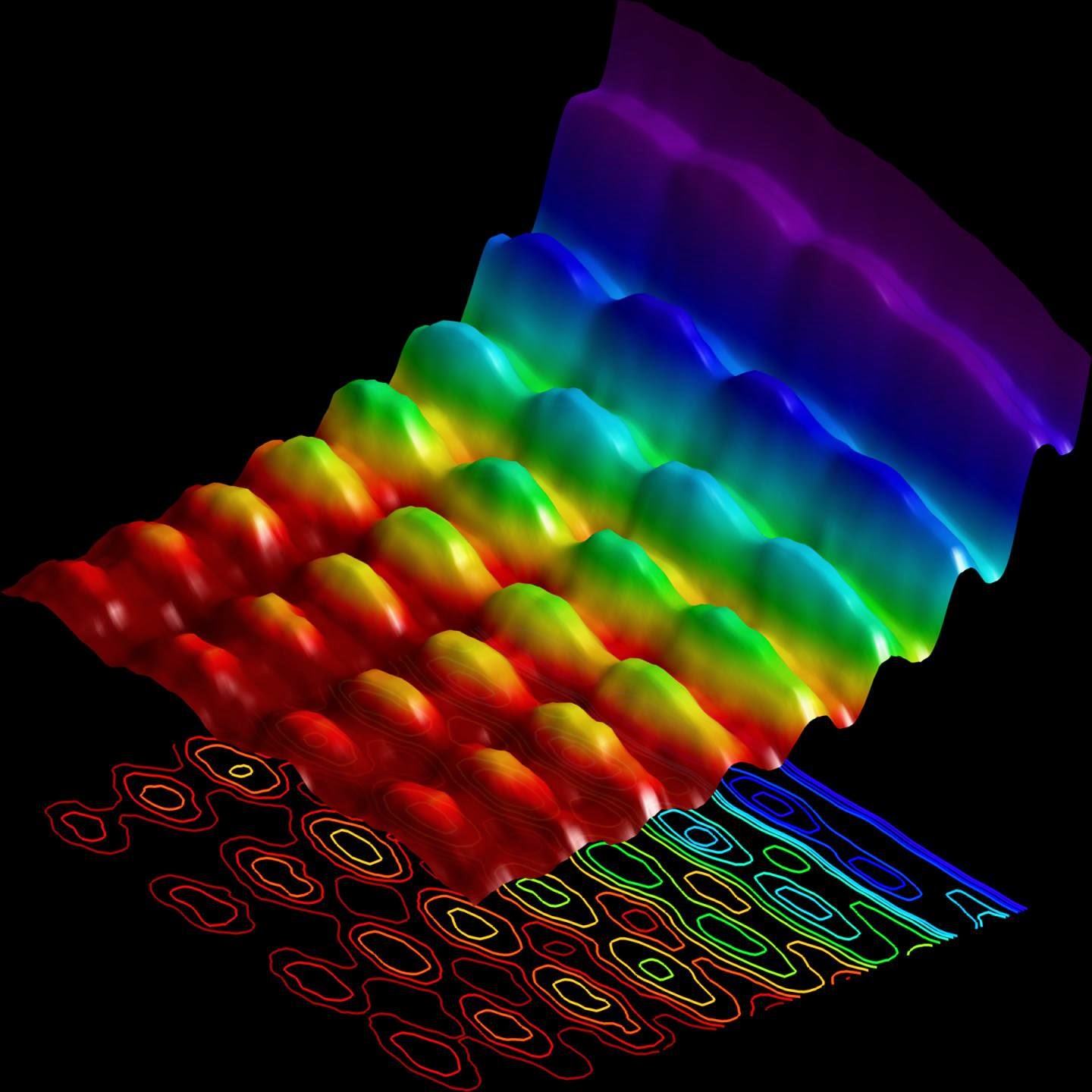| Online: | |
| Visits: | |
| Stories: |

| Story Views | |
| Now: | |
| Last Hour: | |
| Last 24 Hours: | |
| Total: | |
Astounding First Ever Photograph Of Light as a Particle and a Wave
Energy-space photography of light confined on a nanowire, simultaneously shows both spatial interference and energy quantization.
Credit: Fabrizio Carbone/EPFL
A new approach on a classic effect
A research team led by Fabrizio Carbone at EPFL has now carried out an experiment with a clever twist: using electrons to image light. The researchers have captured, for the first time ever, a single snapshot of light behaving simultaneously as both a wave and a stream of particles particle.
The experiment is set up like this: A pulse of laser light is fired at a tiny metallic nanowire. The laser adds energy to the charged particles in the nanowire, causing them to vibrate. Light travels along this tiny wire in two possible directions, like cars on a highway. When waves traveling in opposite directions meet each other they form a new wave that looks like it is standing in place. Here, this standing wave becomes the source of light for the experiment, radiating around the nanowire.
This is where the experiment’s trick comes in: The scientists shot a stream of electrons close to the nanowire, using them to image the standing wave of light. As the electrons interacted with the confined light on the nanowire, they either sped up or slowed down. Using the ultrafast microscope to image the position where this change in speed occurred, Carbone’s team could now visualize the standing wave, which acts as a fingerprint of the wave-nature of light.
While this phenomenon shows the wave-like nature of light, it simultaneously demonstrated its particle aspect as well. As the electrons pass close to the standing wave of light, they “hit” the light’s particles, the photons. As mentioned above, this affects their speed, making them move faster or slower. This change in speed appears as an exchange of energy “packets” (quanta) between electrons and photons. The very occurrence of these energy packets shows that the light on the nanowire behaves as a particle.
“This experiment demonstrates that, for the first time ever, we can film quantum mechanics – and its paradoxical nature – directly,” says Fabrizio Carbone. In addition, the importance of this pioneering work can extend beyond fundamental science and to future technologies. As Carbone explains: “Being able to image and control quantum phenomena at the nanometer scale like this opens up a new route towards quantum computing.”
This work represents a collaboration between the Laboratory for Ultrafast Microscopy and Electron Scattering of EPFL, the Department of Physics of Trinity College (US) and the Physical and Life Sciences Directorate of the Lawrence Livermore National Laboratory. The imaging was carried out EPFL’s ultrafast energy-filtered transmission electron microscope – one of the two in the world.
Contacts and sources:
Citation: Piazza L, Lummen TTA, Quiñonez E, Murooka Y, Reed BW, Barwick B, Carbone F. Simultaneous observation of the quantization and the interference pattern of a plasmonic near-field. Nature Communications 02 March 2015. DOI: 10.1038/ncomms7407
Source: http://www.ineffableisland.com/2015/03/astounding-first-ever-photograph-of.html



